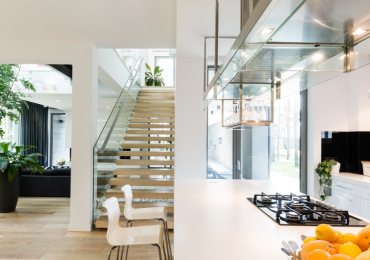Redefining urban living space
The current pandemic has triggered a counterurbanization. People’s desire for deceleration and a better quality of life did not come overnight. Due to rapidly growing numbers in the cities, the first voices were raised several years ago. In times of Corona, it is said from many sides that the rush for rural life will increase significantly. But even before the crisis, futurologists like Daniel Dettling predicted that the flight to the countryside would reach its peak in 2025. This trend will be strengthened by the fact that more and more companies are turning to home offices. However, not everyone sees the exodus from the cities as the only possible reaction to the pandemic.
The pandemic will of course not stop urbanization permanently
Urban developers around the world are looking at the impact of the pandemic on large cities. Accordingly, the international urban research community is currently engaged in intensive discussions on the consequences of the pandemic for urbanization and urban development. COVID-19 undoubtedly has the potential to stop urbanization in the short term, because the foreseeable economic crisis will hit big cities particularly hard. However, metropolises and metropolitan regions remain places of growth and innovation and thus also preferred destinations for international and national migration. The crucial question now is how cities can become more resistant to infectious diseases in the long term.
Back to the old-fashioned small-scale approach
The advocates of “open space” have had very good arguments to date. After all, flats with several small rooms are not only considered old-fashioned but are also real space-savers. And you have to and want to save space if the price per square meter continues to rise. The cost argument is still valid, but the great openness is proving to be a disadvantage in the current exceptional situation. Where one’s own home is suddenly the main place of residence, where several residents gather, the desire for retreats grow. It is an advantage to be able to close doors behind you, in the study as well as in the children’s room, in the kitchen as well as in the living room. Even if this crisis does not last forever: The fascination of the one-room miracle is suffering.
What remains is the desire for a home where you can leave one room or another behind.
Architects and urban developers more in demand than ever during a pandemic
How cities have to adapt is now also a research topic. Corona has exacerbated precisely the problems that metropolises have had to deal with before. You can never make a city completely crisis-proof, but you can design the living space in such a way that you can get through a pandemic safely. Retreats are therefore very much in demand. On one hand to gain distance, on the other hand, to be able to work in peace. If you can work well from home, you will have to commute less often.
As a result, oversized office buildings and even more space will become available in the city. Creativity is what urban planners and architects will need in the world after Corona: After all, the demand for urban living space will remain high even in times of crisis. All this is reason enough for architects, but also for real estate project developers and property developers to take this aspect into account for the future. To increase creativity and ultimately to implement ideas efficiently, archibrix in particular offers with its online platform the possibility of networking globally in order to guarantee crisis-proof urban living space in the future.


